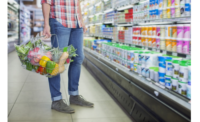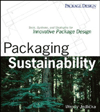Better-than-recycling sustainable packaging
Rapidly-renewable fiber generates sustainable paper packaging






Packaging manufacturers and end-users that are committed to minimizing their environmental footprint have long assumed that recycling is the best option for reducing energy consumption, preventing old-growth tree deforestation, and lowering greenhouse gas emissions. However, as the packaging and paper products industry evolves, we are discovering that recycling is not nearly as sustainable as originally thought. In fact, the process of producing packaging products from recycled materials – including delivery to mills, re-conversion to pulp, de-inking, and redistribution – is not the greenest approach.
Innovation and research and development in forestry have revealed that virgin fiber which is sustainably sourced from rapidly-renewable tree plantations – known as rapidly-renewable fiber (RRF) – is actually a healthier choice for the environment than recycling.
Additionally, when you juxtapose the cumbersome nature of creating recycled products against the fact that they produce lower-quality products which lack the pure white, aesthetically pleasing surface that the food and beverage sector demands, using RRF becomes the obvious choice.
Reconsidering recycling
During the 1990s, recycling garnered tremendous fanfare because it was the only option for manufacturers and consumers to partake in what is now widely known as the “sustainability movement”. But the simple truth is: there’s more to recycling than meets the eye.
Consider, for example, what it takes to manufacture recycled products in the United States. Roughly one-third of the raw materials are sent to China where it is more cost efficient for companies to have their recycled paper products produced. Along the way, large amounts of greenhouse gasses are released to transport recycled paper via cargo ship and coal train to Chinese manufacturing plants. Non-biodegradable chemicals are then used to de-ink and break down recycled materials back to pulp, known as secondary fiber. The finished packaging product is returned to the U.S. along the same routes, doubling the carbon emissions released into the environment.
Although many believe recycling is inherently environmentally friendly, in reality, it is labor-intensive and inefficient. What’s more, when it comes to food and beverage packaging, consumers still prefer the look and feel of paper products made from virgin fibers.
Rapidly-renewable fiber
Our packaging industry is at the dawn of a new age – the age of rapidly renewable fiber.
Rapidly renewable fiber is sustainably-sourced from tree plantations in regions like Southeast Asia, whose tropical climate year-round allows for accelerated tree growth and shortened maturity cycles for harvesting. For instance, acacia and eucalyptus trees in Southeast Asia can be grown and harvested (in the same manner as corn and wheat crops) in about six years, versus the nearly 60 years it can take to harvest a tree in northern climates.
Asia Pulp & Paper (www.asiapulppaper.com), based in Indonesia in Southeast Asia, is an example of a paper products company that is leading the industry transformation towards RRF with a move towards plantation-only fiber by 2015.
Indonesia, too, is leveraging its comparative advantage in climate within the global timber market by entering in a Voluntary Partnership Agreement with the European Union under the Forest Law Enforcement, Governance and Trade (FLEGT) Action Plan. The plan would ensure that Indonesia’s timber certification known as SVLK, of which all of APP’s mills are certified, is recognized as a mark of timber legality under the new European Union Timber Regulation (EUTR), when the VPA is scheduled to become active in 2013.
Duel benefits of RRF
Rapidly renewable fiber is a double win—for the packaging industry and for the environment.
With RRF, packaging products are guaranteed to be aesthetically pleasing, featuring a pure white and smooth finish. In addition, the young, fast-growing trees from which RRF is derived absorb up to double the carbon that old-growth trees can absorb.
The advent of rapidly renewable fiber means that paper and packaging products can be sustainable without recycling. And because RRF provides a quickly replenishing source of fiber, old-growth forests are conserved, even amid the increasing global demand for paper products.
Welcome to the Age of Rapidly Renewable Fiber.
Looking for a reprint of this article?
From high-res PDFs to custom plaques, order your copy today!













